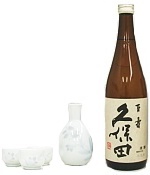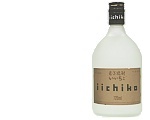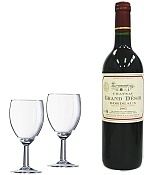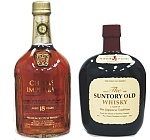| basic information |
Drinking plays an important role in Japanese society. Drinking parties, typically held at restaurants and izakaya, are a common activity that are used to strengthen both social and business ties. A large variety of alcoholic beverages can be found in Japan. Some of the most popular ones are:
 | Beer Beer is the most popular alcoholic drink in Japan. The leading breweries are Asahi, Kirin, Suntory and Sapporo. The art of brewing beer was imported in the early Meiji Period from Germany as a development project for the northern island of Hokkaido. |
 | Happoshu Happoshu (lit. "sparkling alcohol", also known as low-malt beer) is a relatively recent invention by Japanese brewing companies. It has a similar flavor and alcohol content as beer, but it is made with less malt, which gives it a different, lighter taste. Also due to the lower malt content, happoshu is taxed differently than beer and is consequently sold at a lower price. |
 | Third beer "Third beer" (also known as "Shin Janru" or "New Genre") is the most recent development in the Japanese beer industry. In order to counter tax changes that reclassified the malt content of beer and subsequently raised the price of happoshu, this beer-like beverage contains no malt, instead using pea, soya, or wheat spirits. |
 | Rice Wine (nihonshu or sake) Commonly called sake outside of Japan, nihonshu or sake (note that "sake" is also the general Japanese term for alcohol) is brewed using rice, water and white koji mold as the main ingredients. Besides major brands, there are countless local rice wines (jizake). The alcohol content of nihonshu is typically about 10-20%. It is drunk either hot or cold, and it is usually filtered although unfiltered nihonshu (nigorizake) is also popular. |
 | Shochu, Awamori Shochu is a distilled spirit with an alcohol content usually between 20-40 percent. It is commonly made from rice, sweet potatoes, wheat and/or sugar cane. It is usually served mixed with water and ice, fruit juice and sparkling water, or oolong tea. Awamori is the Okinawan version of shochu. It differs in that it is made from long-grained thai-style rice instead of short-grained Japanese-style rice and uses a black koji mold indigenous to Okinawa. |
 | Chuhai Chuhai (the name is derived from "shochu highball") are fruit-flavored alcoholic drinks with an alcohol content that ranges between 5-8 percent. Common flavors include lemon, ume, peach, grapefruit, lime, and mikan (mandarin orange). In addition there are many seasonal flavors that come and go. Recent ones include winter pear, pineapple, and nashi (Japanese pear). They are usually shochu based, and are available in cans anywhere alcohol is sold. |
 | Plum wine (umeshu) Umeshu is made of Japanese plums (ume), sugar, and shochu or nihonshu. Its sweet, fruity, juice-like flavor and aroma can appeal to those who normally dislike alcohol. Commonly made at home, it is also easily found anywhere alcohol can be purchased. It is usually served on the rocks, mixed with soda, or as an umeshu sawa (umeshu sour). |
 | Wine Wine is gaining popularity in Japan, especially among women. While imported red, white, and sparkling wines from France, Italy, the United States and Australia are widely available, there also exists a sizable and increasing domestic wine industry. The most famous wine producing region within Japan is Yamanashi Prefecture. |
 | Other liquors Whisky is perhaps the most popular other western liquor in Japan and is often served on the rocks or mixed with water and ice. Gin and vodka based drinks are also commonly available at bars, restaurants, and izakaya. |
Alcoholic beverages are sold in supermarkets, department stores, convenience stores, liquor stores (sakaya) and at vending machines (although machines in public shut off after 11PM). The legal drinking age is 20 years old, the same as for purchasing tobacco products.
Drinking Manners
When drinking alcoholic beverages, it is customary to serve one another, rather than serving yourself. You should periodically check your friends' glasses, and replenish them before they are empty. Likewise, if someone wants to serve you, you should drink to make room in your glass if it is full, hold it up for the person while they pour, and then take at least one drink before putting the glass down. These customs apply to everyone in your party even if they are not drinking alcohol.
At the beginning of a meal or drinking party you should not start drinking until everybody at the table is served and the glasses are raised for a toast, which is usually "kampai". Other toasts are acceptable, but avoid using "chin chin" when making a toast, since in Japanese this expression refers to the male genitalia.
While it is considered bad manners to become obviously drunk in some formal restaurants, for example in restaurants that serve kaiseki ryori (Japanese haute cuisine), the same is not true for other types of restaurants such as izakaya, as long as you do not bother other guests.
No comments:
Post a Comment